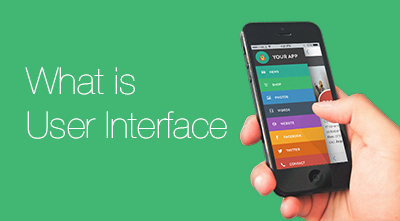What is User Interface?
UI(User Interface) is a Visual part of Computer software, mobile application or operating system by which a user interacts with device or software.

If you check a dictionary for a user interface definition, you will see something similar to the following: “how a user and a computer system interact, especially regarding software and input devices.” Now, that might give you the literal definition, but it doesn’t really dig in and tell you much.
So what is user interface?
User interface, also called UI, is the visual elements, pages, and screens that you use in order to communicate with a device. Whereas UX looks to help a user solve a problem, UI is focused more on how the product looks and functions at a base level.
User Interface Design
User interface design anticipates what users may need to do and ensures the interface offers a way to do those things. Some interface elements that you may be familiar with include input controls, such as buttons or text fields, information components, like tool tips and notification, and navigational components, such as tags or search fields. An interface designer knows how to put these together in a way that best works for the current project.
User Interface Design Principles
There are a number of things to keep in mind when designing an interface, some of which are important to remember. We go over some of these below:
- Simplicity – keep your interface easy to use. It should barely register to the user because of the fluidity and simplicity of use. That’s the mark of a great interface design.
- Consistent – use patterns in your design that can be similar in various elements. This makes users more likely to understand the design quickly and feel comfortable with using it.
- Strategy – color and texture can be used to direct attention where you want it. Try using contrast, light, and color to your advantage and keep people focused on what you want them focuses on.
- Communication – users want to know when things change so they can keep up with what is happening. Inform users of errors, actions, state changes, and other actions.
- Purpose – design in a way that considers the relationship of things on the page. Structure your interface so important things are front and center.
- Typography – consider the typeface you use in relation to font, size, and arrangement. You want to have a page that is easily readable, legible, and scannable.
- Defaults – be aware of why people are coming to your site and then make it easy for them to do that. Anything that makes it easier for a user is going to keep them where you want them longer.
Final Thoughts
If you are interested in learning more about user interface design, there are tons of resources on the Internet. The average UI designer can make $95,000 a year, which is nothing to sneeze at. Even those who want to try it out as a hobby can find tips and tricks that make it easy to start. It’s a field that is huge and will only get larger as more and more devices become integral to our lives.